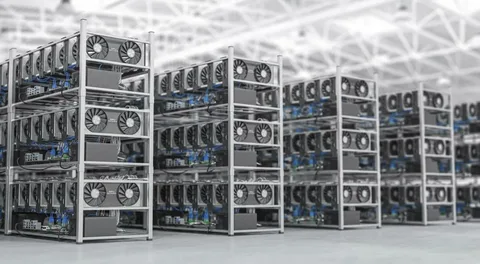The cryptocurrency revolution has introduced several ways to generate wealth, but Bitcoin remains the crown jewel of the digital economy. At the heart of its creation lies mining hardware for Bitcoin, a critical component that powers the blockchain and validates transactions. As the competition to mine Bitcoin grows tougher, the need for efficient and specialized hardware has never been greater.
The Importance of Bitcoin Mining Hardware
Mining Bitcoin is not just about plugging in a computer and letting it run. The network relies on a process called proof-of-work, which requires miners to solve complex mathematical puzzles. To achieve this, miners depend on powerful machines designed specifically for the task. This hardware determines the speed of solving algorithms and the efficiency of electricity consumption, both of which directly impact profitability.
Evolution of Bitcoin Mining Hardware
Bitcoin mining began with standard CPUs on personal computers. However, as mining difficulty increased, CPUs were quickly replaced by more powerful GPUs (Graphics Processing Units), which provided better performance for the computational load. Soon after, FPGAs (Field Programmable Gate Arrays) offered another leap in efficiency. Today, the industry standard has become ASICs (Application-Specific Integrated Circuits), machines built exclusively to mine Bitcoin with unmatched efficiency and power.
Key Features of Modern Bitcoin Mining Hardware
When choosing mining hardware for Bitcoin, several factors should be considered:
-
Hash Rate – The speed at which the machine can perform calculations, measured in terahashes per second (TH/s).
-
Energy Efficiency – Profitability depends not only on speed but also on electricity consumption.
-
Durability – Quality machines are built to operate 24/7 under high loads.
-
Cooling Systems – Mining generates enormous heat, making cooling a crucial factor.
These aspects define how competitive and profitable a miner will be in today’s environment.
Leading Bitcoin Mining Hardware in 2025
Some of the most popular mining rigs dominating the market include:
-
Bitmain Antminer Series – Known for high hash rates and energy efficiency.
-
Whatsminer M30S & M50S – Popular among large-scale miners for stability.
-
Canaan Avalon Series – A trusted option with reliable long-term performance.
These machines represent the cutting edge of Bitcoin mining technology and are widely used in industrial mining farms as well as by independent miners.
Challenges of Mining with Hardware
While owning mining hardware for Bitcoin can be profitable, it also comes with challenges. Electricity costs, hardware maintenance, and cooling solutions often determine whether mining yields a positive return on investment. Additionally, with Bitcoin’s halving events, rewards for miners decrease, making efficiency and low operational costs even more critical.
The Future of Bitcoin Mining Hardware
As technology evolves, we can expect even more efficient hardware that consumes less energy while delivering higher performance. With the growing focus on green mining solutions, future hardware will likely prioritize sustainability alongside profitability. The miners who adapt quickly to these innovations will remain at the forefront of the industry.
Conclusion
Investing in mining hardware for Bitcoin is more than just buying a machine—it’s about staying competitive in an ever-evolving digital landscape. From CPUs to ASICs, the journey of mining hardware reflects the incredible pace of blockchain technology. For anyone serious about mining, selecting the right equipment is the first step toward long-term success in the world’s most valuable cryptocurrency.
